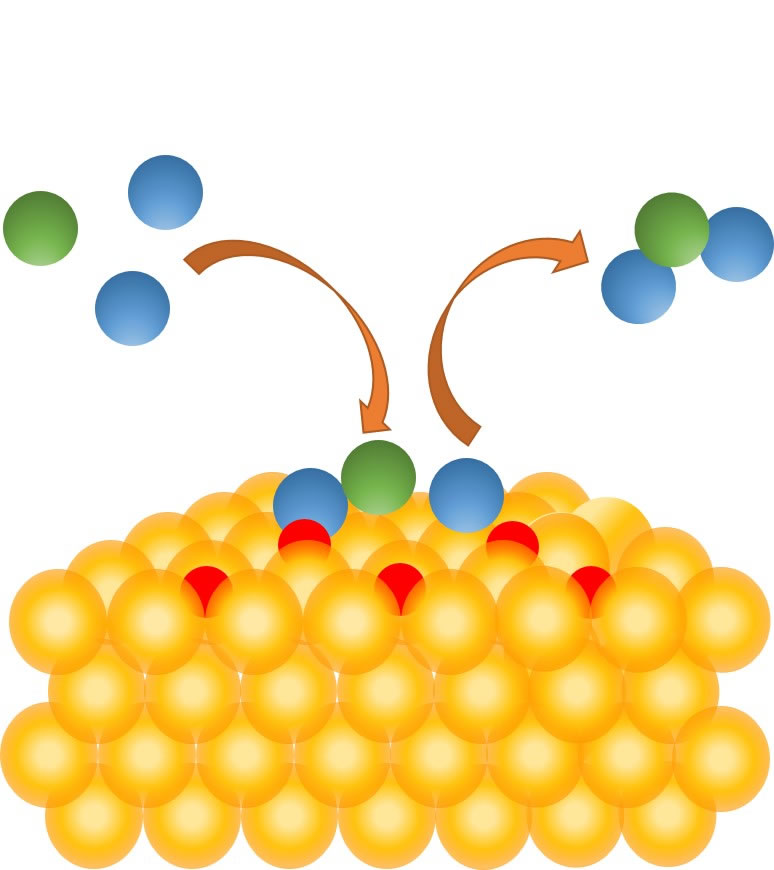
Hetereougeneous catalysts
Lamellar solids such as hydrotalcites and phosphates/phosphonates of tetravalent metals are excellent heterogeneous catalysts with high activity, selectivity and chemical stability.
The special layered structure allows the support and the finely dispersion of a wide range of metal and/or oxide phases with catalytic activity.

MAIN ADVANTAGES OF THE TECHNOLOGY
Composition, structure, morphology and crystal size can be finely tuned. The single-phase and well-defined structure guarantees the dispersion of active phases at atomic level.
The catalytic activity can be tuned and controlled by modulating the surface area of the materials.
The catalyst can be easily removed from the reaction medium (e.g. by filtration, centrifugation) minimizing the environmental impact and the risk of contamination of the reaction products.
The high activity and selectivity is maintained for many cycles reducing the need to renew/replace the catalyst.
The research and development of catalysts derived from lamellar solids was carried out in collaboration with Universities, specialized research centers and industries.
Hydrotalcites and zirconium or titanium phosphates have been functionalized and successfully tested in the following industrial catalytic processes:
- Stereospecific polymerization of isotactic propylene oxide
- Basic catalysis: epoxidation of olefins with H2O2
- Baeyer-Villiger oxidation of ketones
- Steam reforming of alcohol and biomass for the production of hydrogen
- Fischer-Tropsch
- N2O decomposition
- SCR Selective Catalytic Reduction of NO with NH3
- GBL synthesis (gamma-butyrolactone)
Prolabin & Tefarm is able to modify the lamellar materials controlling the synthesis parameters, in order to realize heterogeneous solid catalysts with desired:
- Chemical composition
- Morphology
- Crystal size and dimensional distribution
- Surface area and porosity
